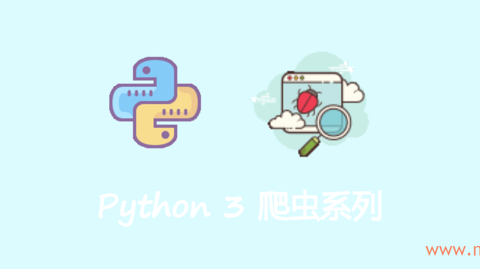Python 3 爬虫|第6章:可迭代对象 / 迭代器 / 生成器

Synopsis: Python中内置的序列,如 list、tuple、str、bytes、dict、set、collections.deque 等都是可迭代的对象,但它们不是迭代器。迭代器可以被 next() 函数调用,并不断返回下一个值。Python 从可迭代的对象中获取迭代器。迭代器和生成器都是为了惰性求值(lazy evaluation),避免浪费内存空间,实现高效处理大量数据。在 Python 3 中,生成器有广泛的用途,所有生成器都是迭代器,因为生成器完全实现了迭代器接口。迭代器用于从集合中取出元素,而生成器用于 "凭空" 生成元素 。PEP 342 给生成器增加了 send() 方法,实现了 "基于生成器的协程"。PEP 380 允许生成器中可以 return 返回值,并新增了 yield from 语法结构,打开了调用方和子生成器的双向通道
代码已上传到 https://github.com/wangy8961/python3-concurrency ,欢迎 star
1. 可迭代的对象
可迭代的对象(Iterable) 是指使用 iter() 内置函数可以获取 迭代器(Iterator) 的对象。Python 解释器需要 迭代 对象 x 时,会自动调用 iter(x),内置的 iter() 函数有以下作用:
- 检查对象 x 是否实现了
__iter__()方法,如果实现了该方法就调用它,并尝试获取一个迭代器 - 如果没有实现
__iter__()方法,但是实现了__getitem__(index)方法,尝试按顺序(从索引 0 开始)获取元素,即参数 index 是从 0 开始的整数(int)。之所以会检查是否实现__getitem(index)__方法,为了向后兼容 - 如果前面都尝试失败,Python 解释器会抛出
TypeError异常,通常会提示'X' object is not iterable(X类型的对象不可迭代),其中 X 是目标对象所属的类
具体来说,哪些是可迭代对象呢?
- 如果对象实现了能返回
迭代器的__iter__()方法,那么对象就是可迭代的 - 如果对象实现了
__getitem__(index)方法,而且 index 参数是从 0 开始的整数(索引),这种对象也可以迭代的。Python 中内置的序列类型,如 list、tuple、str、bytes、dict、set、collections.deque 等都可以迭代,原因是它们都实现了__getitem__()方法(注意: 其实标准的序列还都实现了__iter__()方法)
1.1 判断对象是否可迭代
从 Python 3.4 开始,检查对象 x 能否 迭代,最准确的方法是: 调用 iter(x) 函数,如果不可迭代,会抛出 TypeError 异常。这比使用 isinstance(x, abc.Iterable) 更准确,因为 iter(x) 函数会考虑到遗留的 __getitem__(index) 方法,而 abc.Iterable 类则不会考虑
1.2 __getitem__()
下面构造一个类,它实现了 __getitem__() 方法。可以给类的构造方法传入包含一些文本的字符串,然后可以逐个单词进行迭代:
'''创建test.py模块''' import re import reprlib RE_WORD = re.compile('\w+') class Sentence: def __init__(self, text): self.text = text self.words = RE_WORD.findall(text) def __getitem__(self, index): return self.words[index] def __len__(self): # 为了让对象可以迭代没必要实现这个方法,这里是为了完善序列协议,即可以用len(s)获取单词个数 return len(self.words) def __repr__(self): return 'Sentence({})'.format(reprlib.repr(self.text))
测试 Sentence 的实例能否迭代:
In [1]: from test import Sentence # 导入刚创建的类 In [2]: s = Sentence('I love Python') # 传入字符串,创建一个Sentence实例 In [3]: s Out[3]: Sentence('I love Python') In [4]: s[0] Out[4]: 'I' In [5]: s.__getitem__(0) Out[5]: 'I' In [6]: for word in s: # Sentence实例可以迭代 ...: print(word) ...: I love Python In [7]: list(s) # 因为可以迭代,所以Sentence对象可以用于构建列表和其它可迭代的类型 Out[7]: ['I', 'love', 'Python'] In [8]: from collections import abc In [9]: isinstance(s, abc.Iterable) # 不能正确判断Sentence类的对象s是可迭代的对象 Out[9]: False In [10]: iter(s) # 没有抛出异常,返回迭代器,说明Sentence类的对象s是可迭代的 Out[10]: <iterator at 0x7f82a761e5f8>
1.3 __iter__()
如果实现了 __iter__() 方法,但该方法没有返回 迭代器 时:
In [1]: class Foo: ...: def __iter__(self): ...: pass ...: In [2]: from collections import abc In [3]: f = Foo() In [4]: isinstance(f, abc.Iterable) # 错误地判断Foo类的对象f是可迭代的对象 Out[4]: True In [5]: iter(f) # 使用iter()方法会抛出异常,即对象f不可迭代,不能用for循环迭代它 --------------------------------------------------------------------------- TypeError Traceback (most recent call last) <ipython-input-5-a2fd621ca1d7> in <module>() ----> 1 iter(f) TypeError: iter() returned non-iterator of type 'NoneType'
Python 迭代协议要求 __iter__() 必须返回特殊的 迭代器 对象。下一节会讲迭代器,迭代器对象必须实现 __next__() 方法,并使用 StopIteration 异常来通知迭代结束
In [1]: class Foo: ...: def __iter__(self): # 其实是将迭代请求委托给了列表 ...: return iter([1, 2, 3]) # iter()函数从列表创建迭代器,等价于[1, 2, 3].__iter__() ...: In [2]: from collections import abc In [3]: f = Foo() In [4]: isinstance(f, abc.Iterable) Out[4]: True In [5]: iter(f) Out[5]: <list_iterator at 0x7fbe0e4f2d30> In [6]: for i in f: ...: print(i) ...: 1 2 3
1.4 iter() 函数的补充
iter() 函数有两种用法:
iter(iterable) -> iterator: 传入可迭代的对象,返回迭代器iter(callable, sentinel) -> iterator: 传入两个参数,第一个参数必须是可调用的对象,用于不断调用(没有参数),产出各个值; 第二个值是哨符,这是一个标记值,当可调用的对象返回这个值时,触发迭代器抛出StopIteration异常,而不产出哨符
下述示例展示如何使用 iter() 函数的第 2 种用法来掷骰子,直到掷出 1 点为止:
In [1]: from random import randint In [2]: def d6(): ...: return randint(1, 6) ...: In [3]: d6_iter = iter(d6, 1) # 第一个参数是d6函数,第二个参数是哨符 In [4]: d6_iter # 这里的 iter 函数返回一个 callable_iterator 对象 Out[4]: <callable_iterator at 0x473c5d0> In [5]: for roll in d6_iter: # for 循环可能运行特别长的时间,不过肯定不会打印 1,因为 1 是哨符 ...: print(roll) ...: 6 3 5 2 4 4
实用的示例: 逐行读取文件,直到遇到空行或者到达文件末尾为止
1.5 Iterable reducing functions
有一些函数接受一个 可迭代的对象,然后返回单个结果。下表中列出的每个内置函数都可以使用 functools.reduce 函数实现,之所以要把它们实现为内置函数,是因为使用它们可以便于解决常见的问题。此外,对 all 和 any 函数来说,有一项重要的优化措施是 reduce 函数做不到的: 这两个函数会短路(即一旦确定了结果就立即停止使用迭代器):
| 模块 | 函数 | 说明 |
|---|---|---|
| functools | reduce(function, sequence[, initial]) |
Apply a function of two arguments cumulatively to the items of a sequence, from left to right, so as to reduce the sequence to a single value. For example, reduce(lambda x, y: x+y, [1, 2, 3, 4, 5]) calculates ((((1+2)+3)+4)+5) |
| (内置) | all(iterable, /) |
Return True if bool(x) is True for all values x in the iterable. If the iterable is empty, return True. |
| (内置) | any(iterable, /) |
Return True if bool(x) is True for any x in the iterable. If the iterable is empty, return False. |
| (内置) | min(iterable, *[, default=obj, key=func]) |
With a single iterable argument, return its smallest item. If the provided iterable is empty, return the default obj. |
| (内置) | max(iterable, *[, default=obj, key=func]) |
With a single iterable argument, return its biggest item. If the provided iterable is empty, return the default obj. |
| (内置) | sum(iterable, start=0, /) |
Return the sum of a 'start' value (default: 0) plus an iterable of numbers. When the iterable is empty, return the start value. |
2. 迭代器
迭代是数据处理的基石。当扫描内存中放不下的数据集时,我们要找到一种 惰性 获取数据项的方式,即按需一次获取一个数据项。这就是 迭代器模式(Iterator pattern)
迭代器 是这样的对象: 实现了无参数的 __next__() 方法,返回序列中的下一个元素,如果没有元素了,就抛出 StopIteration 异常。即,迭代器 可以被 next() 函数调用,并不断返回下一个值
在 Python 语言内部,迭代器 用于支持:
- for 循环
- 构建和扩展集合类型
- 逐行遍历文本文件
- 列表推导、字典推导和集合推导
- 元组拆包
- 调用函数时,使用
*拆包实参
2.1 判断对象是否为迭代器
检查对象 x 是否为 迭代器 最好的方式是调用 isinstance(x, abc.Iterator):
In [1]: from collections import abc In [2]: isinstance([1,3,5], abc.Iterator) Out[2]: False In [3]: isinstance((2,4,6), abc.Iterator) Out[3]: False In [4]: isinstance({'name': 'wangy', 'age': 18}, abc.Iterator) Out[4]: False In [5]: isinstance({1, 2, 3}, abc.Iterator) Out[5]: False In [6]: isinstance('abc', abc.Iterator) Out[6]: False In [7]: isinstance(100, abc.Iterator) Out[7]: False In [8]: isinstance((x*2 for x in range(5)), abc.Iterator) # 生成器表达式,后续会介绍 Out[8]: True
Python 中内置的序列类型,如 list、tuple、str、bytes、dict、set、collections.deque 等都是 可迭代的对象,但不是 迭代器。而 生成器 一定是 迭代器
2.2 __next__() 和 __iter__()
标准的 迭代器 接口:
__next__(): 返回下一个可用的元素,如果没有元素了,抛出StopIteration异常。调用next(x)相当于调用x.__next__()__iter__(): 返回迭代器本身(self),以便在应该使用可迭代的对象的地方能够使用迭代器,比如在for循环、list(iterable)函数、sum(iterable, start=0, /)函数等应该使用可迭代的对象地方可以使用迭代器。说明: 如章节 1 所述,只要实现了能返回迭代器的__iter__()方法的对象就是可迭代的对象,所以,迭代器都是可迭代的对象!
下面的示例中,Sentence 类的对象是 可迭代的对象,而 SentenceIterator 类实现了典型的 迭代器 设计模式:
import re import reprlib RE_WORD = re.compile('\w+') class Sentence: def __init__(self, text): self.text = text self.words = RE_WORD.findall(text) def __repr__(self): return 'Sentence(%s)' % reprlib.repr(self.text) def __iter__(self): return SentenceIterator(self.words) # 迭代协议要求__iter__返回一个迭代器 class SentenceIterator: def __init__(self, words): self.words = words self.index = 0 def __next__(self): try: word = self.words[self.index] # 获取 self.index 索引位(从0开始)上的单词。 except IndexError: raise StopIteration() # 如果 self.index 索引位上没有单词,那么抛出 StopIteration 异常 self.index += 1 return word def __iter__(self): return self # 返回迭代器本身
2.3 next() 函数获取迭代器中下一个元素
除了可以使用 for 循环处理 迭代器 中的元素以外,还可以使用 next() 函数,它实际上是调用 iterator.__next__(),每调用一次该函数,就返回 迭代器 的下一个元素。如果已经是最后一个元素了,再继续调用 next() 就会抛出 StopIteration 异常。一般来说,StopIteration 异常是用来通知我们迭代结束的:









0 条评论
评论者的用户名
评论时间暂时还没有评论.